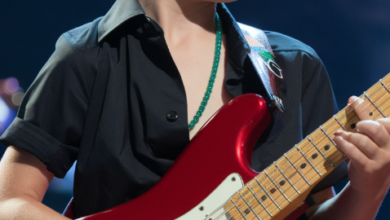Mother and Daughter?!?

The internet has an extraordinary power to propel stories into the spotlight, sometimes for reasons that are far from flattering. In mid-July, a case labeled by many as the “Maricel incident” erupted across social media in Spanish-speaking countries, sparking heated debates that cut across cultural, legal, and psychological lines. At the center of the controversy was a mother-and-daughter duo known online as “Maricel and her daughter.” Their decision to record and share highly personal content together triggered a firestorm of reactions, ranging from moral outrage to broader reflections on the limits of digital exposure.
The virality of the case illustrates how quickly social platforms can amplify sensitive or scandalous material. Within hours of being uploaded, clips and commentary spread rapidly, creating waves of memes, denunciations, and debates. But behind the sensational headlines lies a much deeper issue: what happens when family boundaries, digital expression, and the pursuit of online attention collide?
The controversy has been dissected in countless online forums, television debates, and even academic spaces. For many observers, the Maricel case is not just about one family but about the blurred lines of privacy and performance in the internet age. Social media has normalized the public sharing of what were once considered private moments, but the extent of this exposure continues to test cultural norms.
Legal experts were quick to weigh in, raising questions about how far freedom of expression can or should extend when family dynamics are involved. While producing and sharing personal digital content is not in itself illegal, doing so within a family context sparks complicated legal and ethical dilemmas. Some commentators suggested that existing laws on exploitation, consent, and public morality may need to be revisited in light of new online behaviors that defy traditional boundaries.
Psychologists have also entered the conversation, focusing on the mental health implications. The rapid rise to viral fame can be overwhelming, and the backlash can leave long-lasting scars. Public shaming, especially on platforms with global reach, often subjects individuals to ridicule, harassment, and social isolation. In this case, experts warned that both participants could face significant emotional consequences, not only because of the controversy itself but because of the deep rupture in public perception of family roles.
Culturally, the incident has sparked an intense moral debate. For some, the Maricel case symbolizes the erosion of traditional values, with critics arguing that the pursuit of online attention has led people to cross boundaries that should remain intact. Others, however, frame the discussion around the evolution of digital culture, noting that social media thrives on pushing limits and that outrage is often a byproduct of shifting cultural norms. Regardless of perspective, few deny that the case touches on sensitive themes of respect, dignity, and generational expectations.
The conversation has not been confined to Spanish-speaking audiences. International media outlets quickly picked up the story, interpreting it as part of a broader trend in which personal or shocking content gains traction online, only to unleash widespread controversy. This global amplification demonstrates how stories can escape local contexts and spark debates far beyond their origins, drawing in voices from different cultural and legal traditions.
One of the key takeaways from the incident is the responsibility of platforms themselves. Social media companies, while providing spaces for expression, also face the challenge of moderating content that provokes moral panic or raises ethical concerns. The Maricel case has renewed calls for stronger guidelines on what can be shared, especially when issues of family and psychological well-being are at stake. Critics argue that platforms must strike a balance between respecting freedom of expression and protecting individuals and communities from potential harm.
The incident also underscores how the hunger for online fame and visibility can clash with personal dignity. In an era where “going viral” is seen by some as a pathway to success, individuals often take risks that expose them to unforeseen consequences. Yet as this case shows, the rewards of attention can be fleeting, while the costs—public scrutiny, stigma, and emotional strain—can linger indefinitely.
As the dust begins to settle, the Maricel controversy leaves society grappling with bigger questions. Where should the line be drawn between private life and public performance? How should families navigate the temptations and dangers of the digital age? And what responsibility do viewers themselves bear, as consumers who fuel the very virality they later condemn?
Ultimately, this story is about more than one mother and daughter. It is about the way the internet magnifies choices, the cultural tensions between tradition and modernity, and the urgent need to reflect on how far we are willing to go for attention in the digital age. The Maricel case may eventually fade from the headlines, but the debates it has provoked will continue to echo, reminding us that the power of virality is both transformative and perilous.




